Branded Searches Showdown: Paid Ads vs. Organic Pull
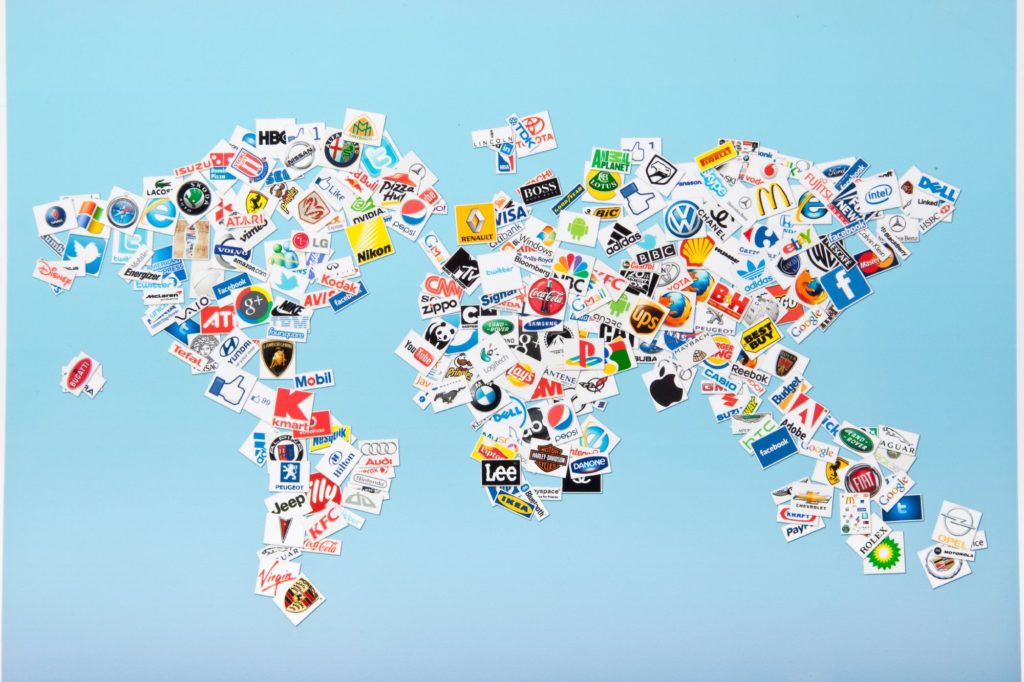
Numerous renowned companies often roll out promotional campaigns that are solely focused on product or service categories. They might believe that investing in pay-per-click advertising for branded queries would not provide a worthy return on investment.
A Few Theories
The term “brand query” refers to the different variations of a company’s name encompassing its various presentations: using different scripts and whether the name is presented as one or split into multiple words.
Brand queries offer an indicator of a company’s recognition and the level of public interest in it. However, it often begs the question, is there a need for advertisements when the company already holds prime positions in organic search engine results through its name alone? Those opposed to brand promotion argue that paid ads serve only to deplete the budget, replacing the free site visits with paid ones.
Yet, brand queries can actually provide*advantages. You just need to have an understanding of their functionality and properly configure Pay-Per-Click (PPC) advertising.
Features of brand promotion
Prime features of an effective branded advertising campaign:
- The foremost principle to remember is that your corporate identity needs to resonate effectively among your audience. When they input your company’s name in the search bar, it should generate a sense of familiarity and purpose. Absent of this, you risk attracting an untargeted audience.
- Reality-check plays a pivotal role in brand promotion. Should your brand name resemble recent movie titles, video game series, movie character names, etc. it is essential to timely incorporate negative keywords.
- Keeping a watchful eye on opponent actions is a beneficial tactic. Imagine a situation where they employ your brand name in their advertisements. You are presented with two alternatives: either displace them from achieving the top slot in paid search results by amplifying your ads or report unauthorized usage of your brand name to the advertising system. However, proceeding with the latter demands some prerequisites. You should be the bona fide owner of the registered trademark, and your brand name has to be used as per the registered format.
Ever conscious vigilance becomes necessary when dealing with competitors. The practice of utilizing a rival’s brand for individual promotional benefits is a common occurrence even amidst multinational corporations.
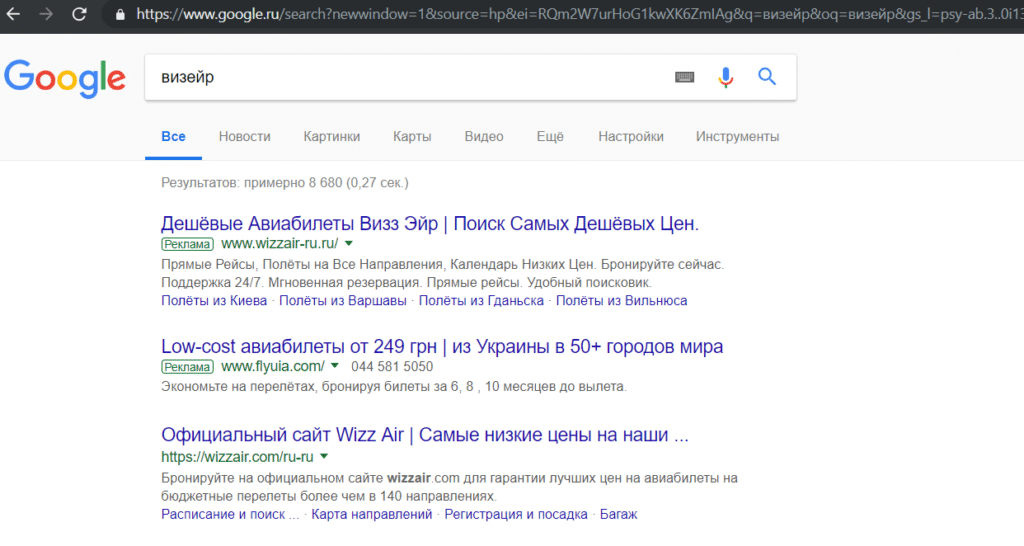
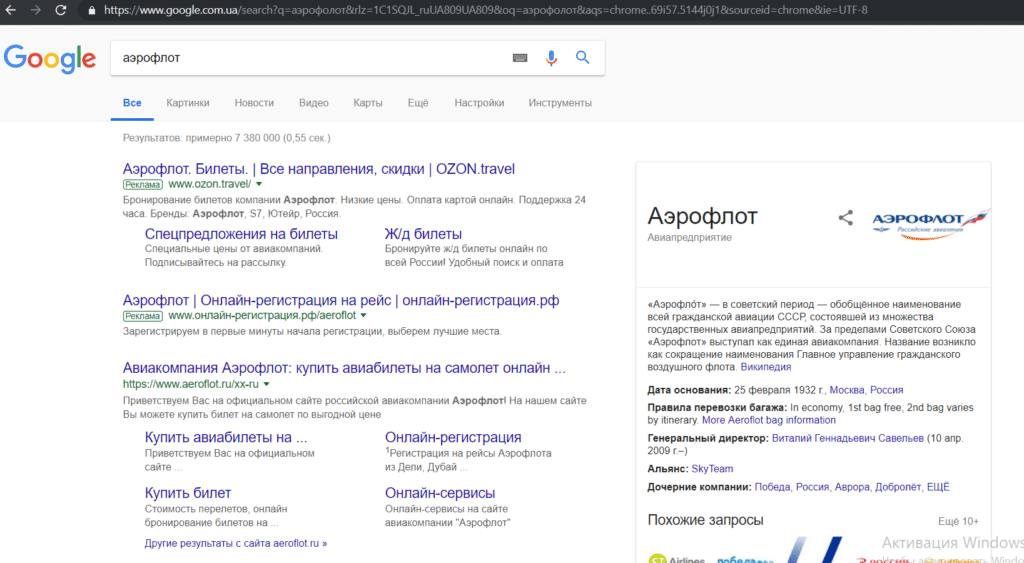
Branded Traffic by the Numbers
Thus, it’s unquestionable that branded inquiries could potentially lead to a drop in the organic clicks. However, it is also essential to note that they simultaneously drive higher traffic volumes your way. The conundrum lies in calculating the net loss versus the net gain, a computation that relies on numerous factors. Nevertheless, there is a beacon of hope in the form of research findings that can shed light on what one should anticipate.
Back in 2014, Bing undertook an extensive research endeavour that leveraged 3 million search results for data analysis.
The most critical finding from the study revealed that a massive 31% of supplementary clicks are directed towards a firm that initiatives advertising on branded inquiries. Intriguingly, a mere 11% of the clicks were siphoned off from the company’s own organic search results.
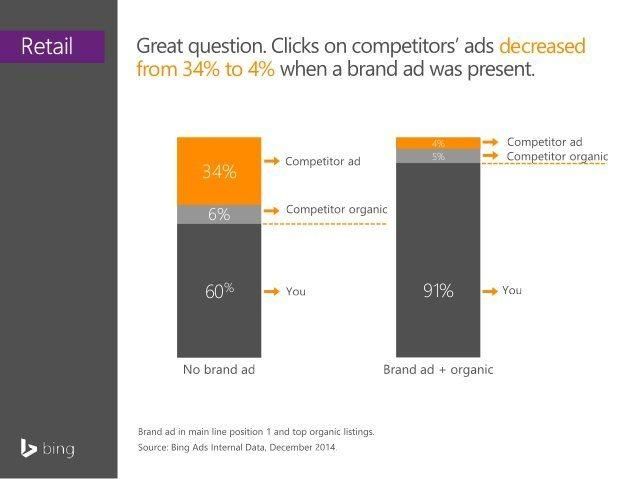
Features and benefits of branded traffic
Along with numerical measurements of a brand’s promotional efficacy, there are subjective indicators as well:
- Optimal CTR due to dedicated followers. This is almost a complete success: a user searches for you and effortlessly locates you.
- Rise in audience exposure. Retargeted display campaigns based on brand-specific searches assist in spreading brand awareness. Although they are much more economical than search network campaigns, their CTR may be slightly reduced too.
- Budget-friendly bids. Clicks on these advertisements will be affordable due to the lack of competition for branded searches and a high-quality score and relevance in platforms like Google Ads. The economic efficiency of such advertisements will offset some of the clicks drawn away from organic search outcomes.
- The opportunity to be featured in searches with a spelling mistake or inaccuracy. If 10-20% of your audience misspells your business name and your website isn’t optimized for those scenarios, you may lose visibility among those customers. If there is such an opportunity (to analyze requests is necessary for this), it might be worth including a request with a mistake in your ad campaign.
However, the issue of so-called “traffic cannibalization” should not be dismissed. This could have both beneficial and damaging impacts.
Consider three primary types of cannibalization:
1. Destructive: Paid traffic drew in fewer clicks in comparison to organic traffic.
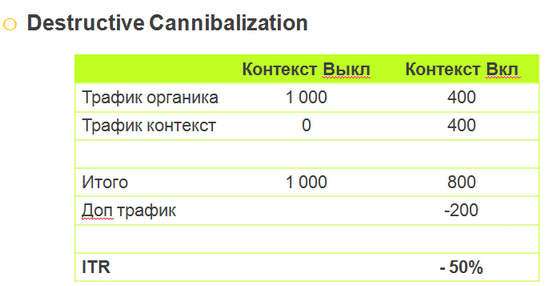
2. Constructive: Paid traffic resulted in fewer withdrawals from organic sources than the number of visitors it attracted.
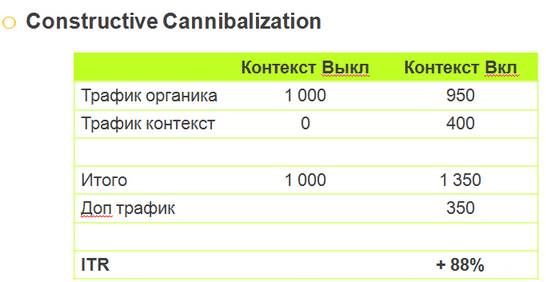
3. Lastly, Amplification: Contextual advertising boosted the number of organic click-throughs.
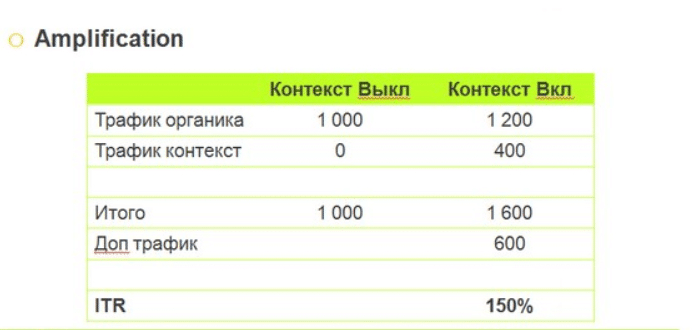
The two main strategies: defense and attack
The aim of developing a protective strategy is to secure an edge over other competitors in the online advertising rankings.
The only thing visible on over 60% of the screen, particularly in the first four search engine results, are ads. These effectively relegate organic search results to the second screen or even lower, irrespective of the site’s optimization. This reality is more pronounced for desktop views. For mobile platforms, the winner is always the one who tops the advertising chart. Hence, brand-related queries offer a lifeline, making your brand more conspicuous to the intended audience.
Here are steps to follow when implementing this defensive strategy:
- Maximize the use of selling queries comprising your brand name and the product that appeal to potential clients, or the promotional words such as discounts, sales, offers, etc.
- Indicate clearly in the ad text that it leads to your official site. Doing this not only shows honesty but also fosters trust among your audience.
- Leverage the maximum allowable characters and extensions to dominate as much screen space as your ads can occupy.
- Protect your reputation by ensuring congruence between the landing page and the ad before launching the ad.
Contrarily, the objective of the offensive strategy is to grab the top positions before your competitors, thereby multiplying the clicks related to branded queries. The ideal scenario entails securing an ad block and one of the top positions on the first page of organic results. Consequently, less organic output within the first page leads to more brand-related clicks.
Findings of a study conducted by Google in 2011, that covered 390 cases, corroborated this assertion. When a company is top-ranked in search results, it receives 50% of clicks from ads as an added bonus. Whereas, 82% of clicks are credited to brand-related advertising when a company ranks between second and fourth positions. If the company is beyond the fifth position, 96% of clicks derive from branded advertising.
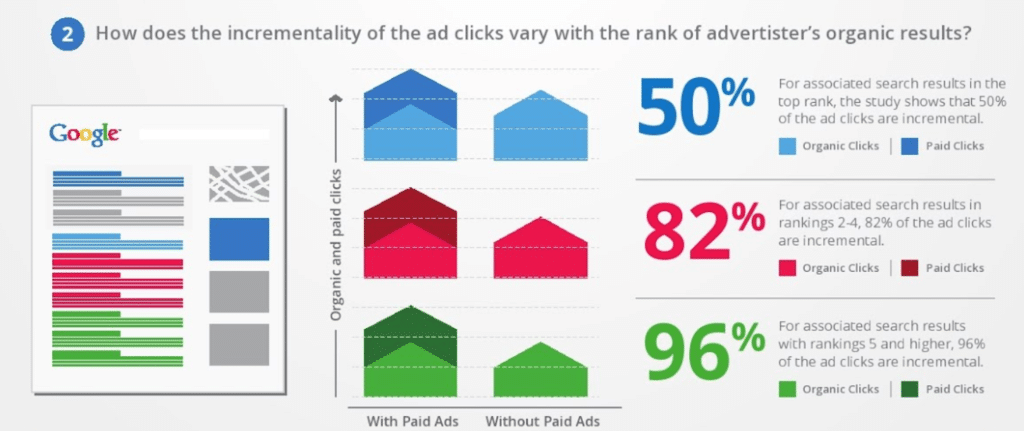
Supporting the offensive strategy is another research finding from Bunnyfoot, revealing that 36% of users cannot differentiate between organic search results and ads. The same study asserts that 27% of Internet users do not know about the existence of ads on Google. Despite these results being from a 2014 study, the scenario might not have changed significantly over four years.
The distinction between the two strategies is not absolute and can be applied together in a single advertising campaign.
Upon unleashing the brand context, it’s critical to monitor the outcomes:
- Determine the cost of PPC advertising and the overall brand traffic recorded.
- Analyze the conversion rates from brand search and context.
- Scrutinize the behavior map to determine the traffic that brings sales. This step is vital for evaluating the cost-effectiveness of the context.
- Monitor the frequency of brand-related queries, their growth trend and the additional keywords used with your brand.
For sites yet to feature on the search engine’s first page, perhaps due to a recent launch or rebranding, if the company name is already popular, it is highly advisable to initiate branded advertising. Google’s earlier mentioned research supports this stance.
If there are no mentions of the brand on the first page yet, branded advertising could yield 81% of views and 66% of clicks to the website.

How do you work with branded traffic?
The key takeaway is that failing to give due attention to brand queries techniques can result to conceding the first page of search results to your competition. This can directly result in losing potential customers to them.
Deciding whether to engage in brand context or not should not be based solely on casual recommendations or personal assumptions. It should rather be founded on tangible research results.
You should ensure your brand has gained sufficient recognition and is prepared for advertisement before launching branded ads.
If your brand quotient is not ready yet, it would be beneficial to invest some time in public relations. To conveniently track and draw suitable conclusions, it’s advisable to kickstart a dedicated advertising program for branded queries.
Choosing to simplify the complexities of managing advertising boards and settings often means turning to certified experts in the field of internet marketing.
The following research findings were referenced in this article:
- Brand Term Bidding: An offensive + defensive strategy
- A lot of people really don’t know that Google contains advertisements
- Impact of Organic Ranking on Ad Click Incrementality
Contact Me


